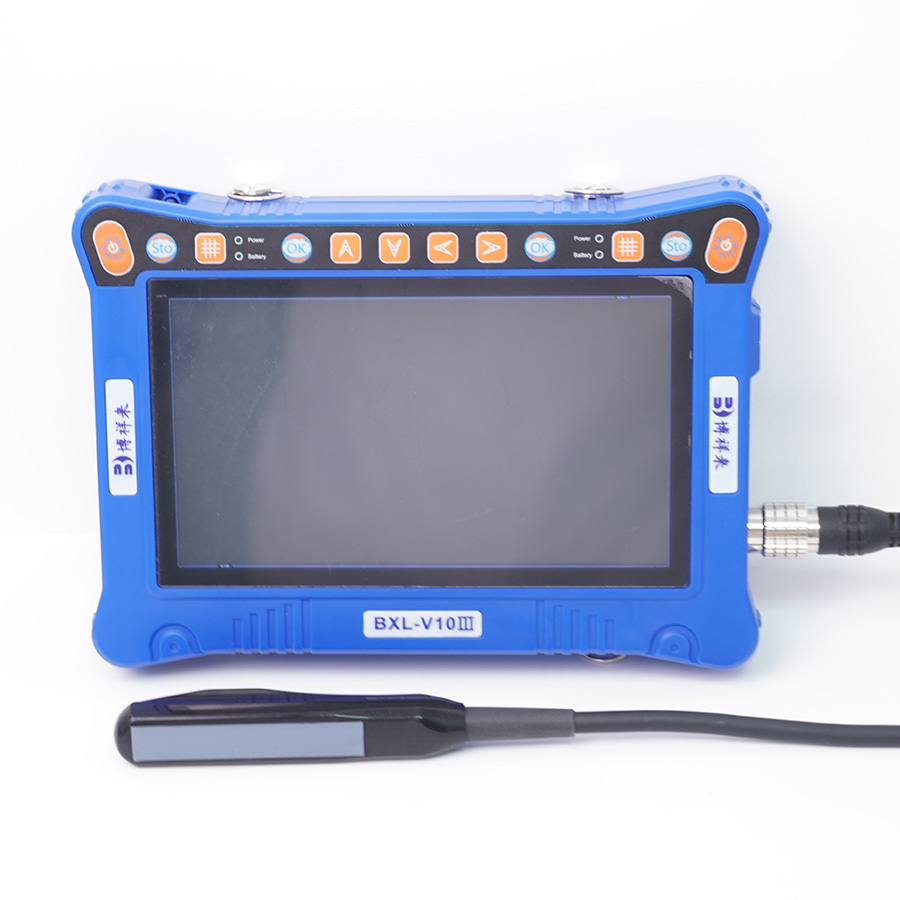Veterinary B-ultrasound plays an increasingly important role in the detection of dairy cow reproduction. However, for beginners, it is estimated that they have only a limited understanding of the applications of veterinary B-ultrasound. Yang Gaofeng, a professional technical teacher at Boxianglai, is a veterinary imaging researcher and has conducted in-depth research on the application of B-ultrasound in animals. The application of B-ultrasound for cattle is mainly divided into the following situations:
1. Diagnosis of early pregnancy: Veterinary B-ultrasound tomography can directly observe the initial changes in the uterus at the beginning of pregnancy, and the time for diagnosing early pregnancy is earlier than that of type A and type D. Using a 5.0MHZ rectal probe, the diagnostic compliance rate is 50% at 18 days of pregnancy, and it can reach 100% at 20-22 days. It is used to check the effect of commercial embryo transfer, which can be 1 month earlier than rectal examination. Improving the ultrasound frequency (7.5MHz) and resolution can also diagnose early pregnancy earlier.
2. Observation of conceptus development: Curran, B. et al. (1986) systematically observed 10-60 days pregnant dairy cows using a 5.0MHz rectal probe, and directly observed the development of the fetal sac and the formation of various fetal structures in the early stage of pregnancy.

3. Observation of ovaries: Veterinary B-ultrasound B-ultrasound observation of ovaries is used to study the basic structure of the ovaries, such as ovarian stroma, ovarian blood vessels, follicles, corpus erythrae and corpus luteum. At the same time, various abnormalities around the ovaries can also be observed.
Follicles: B-ultrasound can observe follicles with a diameter greater than 2mm, observe the development of individual follicles, measure their diameter size, growth rate and changes before ovulation. Follicles with a diameter greater than 10mm are in the 2nd and 3rd stages of the growth period. During this period, the growth and degeneration rates of follicles are 2.0±0.4mm and 2.0±0.9mm per day, respectively. For cows used for superovulation, the number of growing follicles and the diameter of the follicles can be correctly estimated. The characteristics of follicle growth during superovulation are fast speed and small diameter.
Corpus luteum: The structure of the corpus luteum is different at different stages. After ovulation, the corpus luteum is formed due to bleeding, and the echo of the corpus luteum is weaker than that of the mature corpus luteum. The mature corpus luteum is concave and can be easily distinguished from the ovarian matrix. Usually, the central echo of the corpus luteum is strong, and there is an echo-free line on its dorsal edge. Some corpora lutea have a cavity in the center, which is different from the follicle in that there is no corpus luteum tissue around the latter.
Abnormal follicles and corpora lutea: The diameter of follicular cysts is significantly larger than that of normal mature follicles. Real-time ultrasound can determine the corpus luteum tissue. The corpus luteum cyst has a cyst cavity in the middle and a circle of corpus luteum tissue around it, which is different from the follicular cyst.
4. Predicting the sex of the fetus: Determining the sex of the fetus early can increase the reproduction rate. Use a 5.0 or 7.5MHz probe, either fan scan or linear array, to scan between the two thighs of the fetus between 73 and 120 days of pregnancy, and determine the gender based on the scrotum, foreskin or nipple, and labia; between 63 and 73 days of pregnancy, based on the exploration of the reproductive nodules, forward movement indicates male and backward movement indicates female. Confirmed by delivery, the former has a 94% compliance rate and the latter has a 100% compliance rate. The diameter of the scrotum is 2-14mm at 73-119 days of pregnancy.
5. Observe the involution of the uterus after delivery: Use a 5.0MHz rectal probe to cross-cut the uterine horn to show the boundary between the endometrium and the vascular layer. According to the diameter of the cross-section of the uterus, the presence of lochia and the porous uterine cavity, study the involution of the uterus.
6. Exploring the breast and nipple: Use a 5.0MHz linear array probe and a 5.0MHz or 10MHz mechanical fan-scanning probe to scan. The nipple is a low-echo structure with an echo-free cavity. The nipple wall is divided into three layers, the outer and inner layers are strong echoes, and the middle is low echoes. The inner layer of the nipple canal has folds extending into the cavity, and the nipple canal is a thin line-shaped echo-free area. The breast cavity (milk pool) and the nipple cavity (nipple milk pool) are connected to each other and are echo-free areas. The inner wall of the breast cavity is lined with national echo folds from strong to low. Mammary tissue is a low-echo area, in which there are anechoic lactiferous ducts. It can be used to diagnose neoplasms, hyperplasia, ductal stenosis, and atresia, providing a basis for surgery.
The above are the main applications of veterinary B-ultrasound in dairy cow reproduction. In practical applications, a lot of knowledge needs to be learned.







